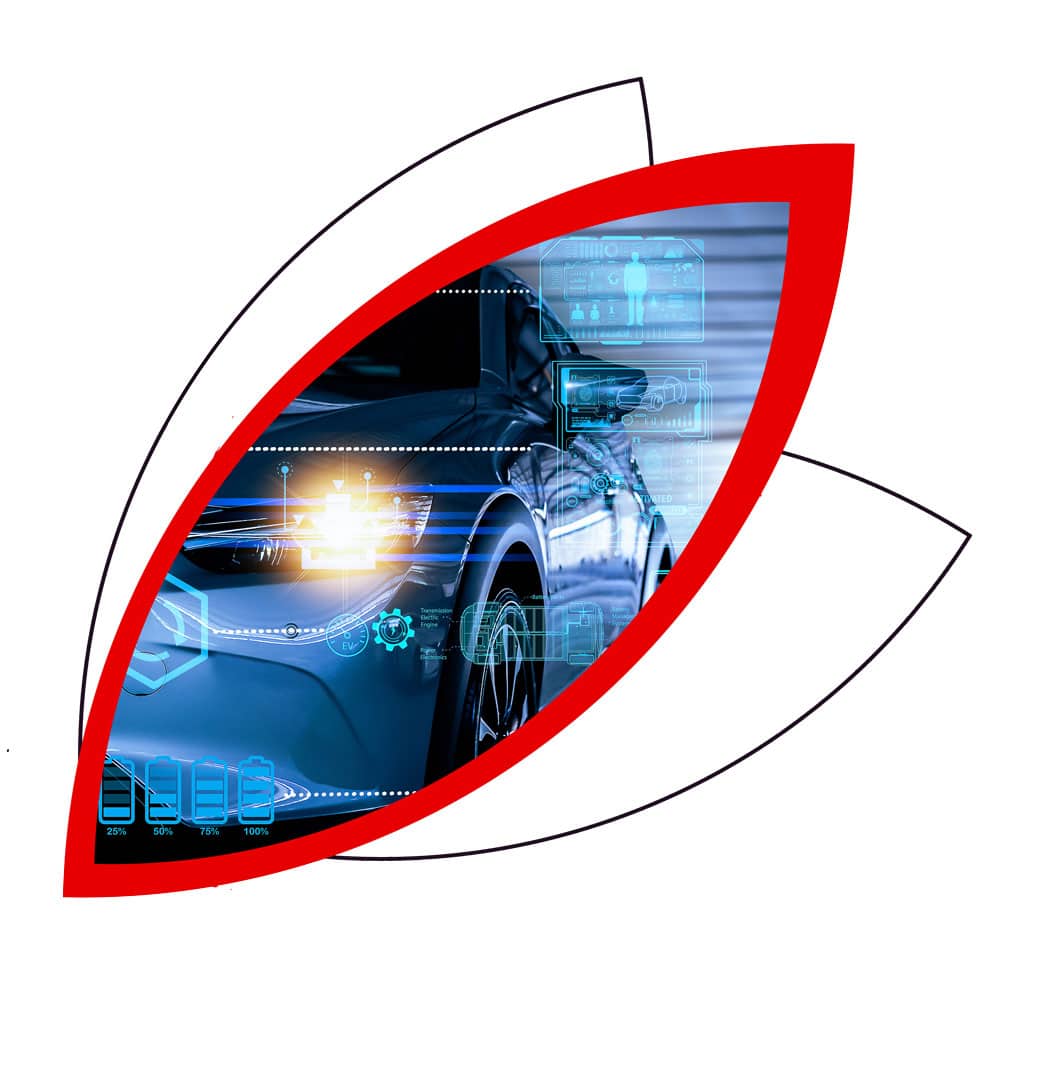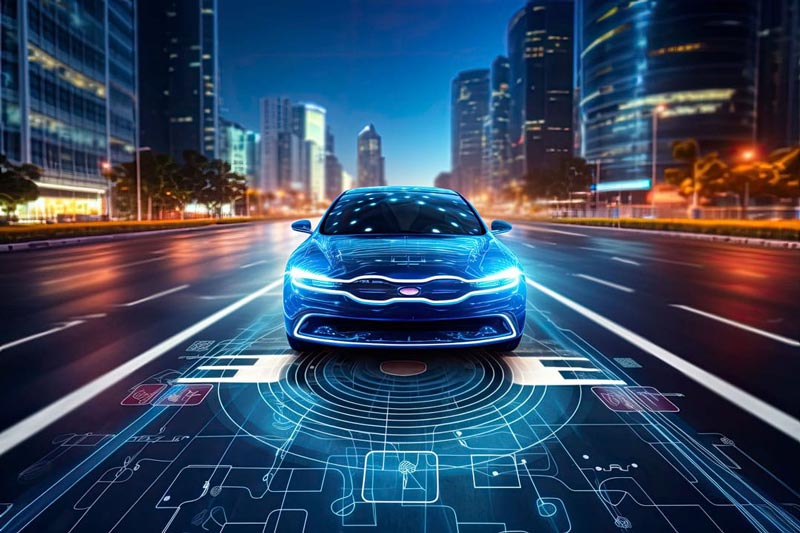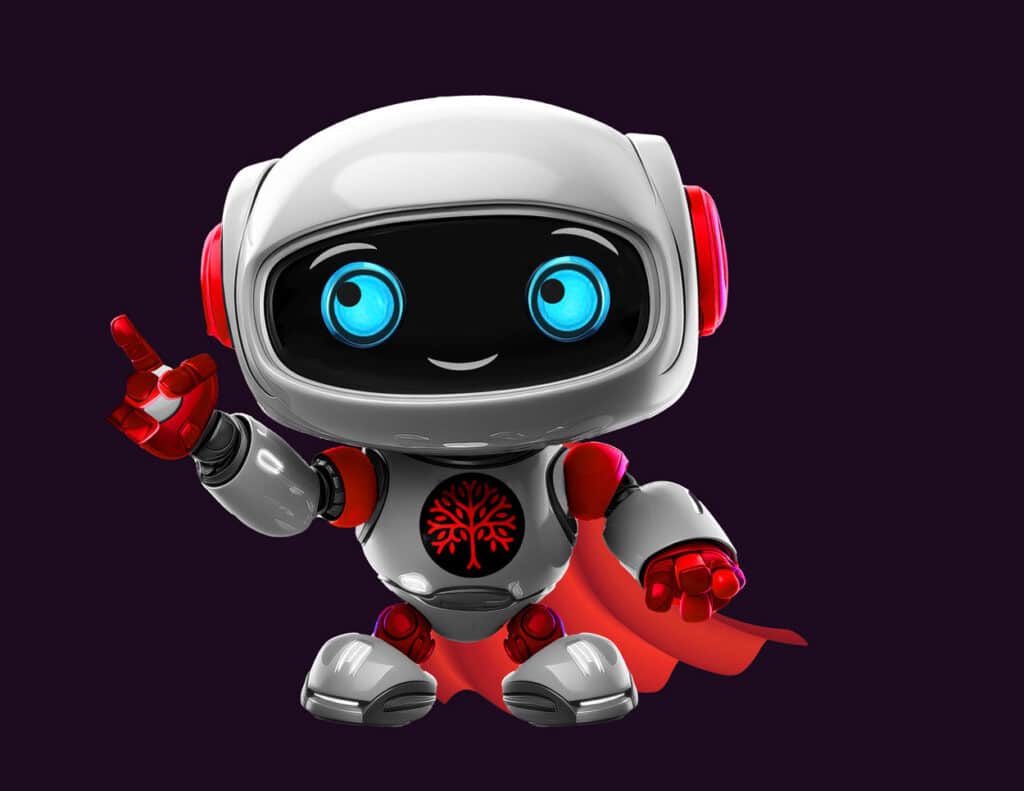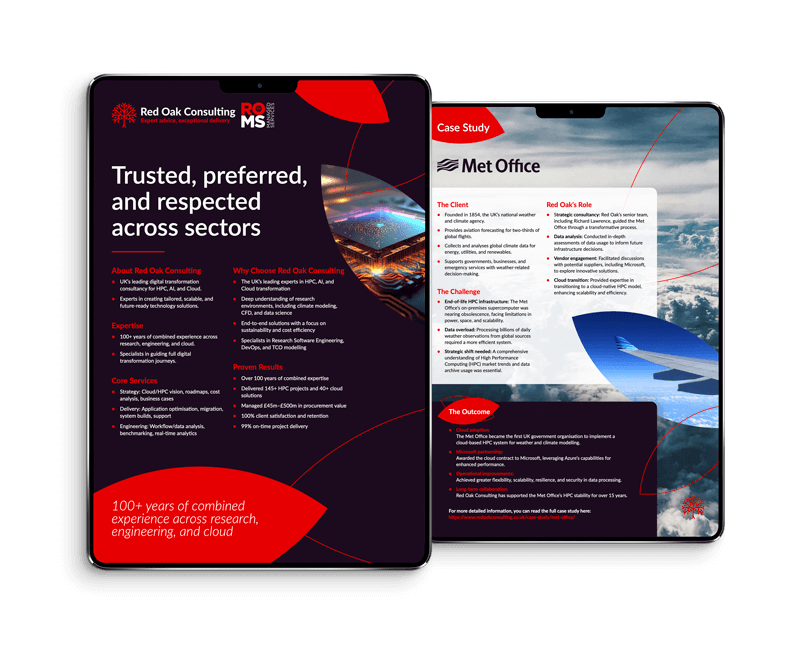The Power of High-Performance Computing
The automotive industry is in the midst of a transformation, driven by world-leading technology, evolving consumer demands, and stringent regulations. Supporting this revolution is High-Performance Computing (HPC), redefining how vehicles are designed, engineered and manufactured. In this blog post, we’ll dive into the world of HPC and its impact on the automotive industry.
Where is HPC used in Automotive?
In the automotive sector, HPC is the powerhouse behind handling massive real-time datasets, running sophisticated simulations, and performing advanced analytics that standard computing resources simply can’t manage. From the early design phases to the final product, HPC is a key player.
 Designing the curves of a new car, the crash structure that keeps you safe, or even the vents that keep you cool in the summer are all accelerated by HPC.
Designing the curves of a new car, the crash structure that keeps you safe, or even the vents that keep you cool in the summer are all accelerated by HPC.
HPC is particularly crucial during the early design and development stages. Engineers and designers rely on HPC to create detailed 3D models and simulations that predict how a vehicle will perform under various conditions.
This includes everything from aerodynamics and structural integrity to thermal management and noise, vibration, and harshness (NVH) characteristics.
By leveraging HPC, automotive companies can iterate on designs faster than ever, testing multiple configurations and materials to find an optimal solution without the need for expensive physical prototypes.
Saving Time and Money When Crash Testing.
One of the big benefactors of HPC is the crash test department. Thanks to HPC and virtual crash simulations, engineers run multiple crash tests a day without destroying expensive prototypes. Software packages like Abaqus, Nastran, and LS-DYNA make this possible.
These simulations also assess the durability of vehicle parts, ensuring your car can handle whatever you throw at it. Thanks to HPC, our vehicles are safer and more durable than ever before.
Additionally, virtual crash testing provides valuable data that is used to improve other aspects of vehicle design. For example, the results of a crash simulation can inform the development of advanced driver-assistance systems (ADAS) and improve the performance of associated safety systems such as multi stage seatbelts.
By understanding how a vehicle responds to different crash scenarios, engineers design systems that better protect occupants and prevent accidents.
Computational Fluid Dynamics (CFD)
While Formula 1 displays the extreme use cases for HPC and CFD software in fine-tuning vehicle aerodynamics, the same technology is crucial for everyday cars.
As carbon emissions and electric vehicle range become more critical, improving a vehicle’s aerodynamics is a major engineering challenge. HPC-powered simulations help manufacturers create more fuel-efficient vehicles with lower emissions, meeting stringent environmental regulations. Software tools such as OpenFoam, STAR-CCM+, and Ansys Fluent are commonly used in this field.
CFD simulations allow engineers to study the flow of air around a vehicle, identifying areas of high drag that can reduce efficiency. By making small adjustments to the vehicle’s shape and design, engineers can significantly improve its aerodynamic performance. This is particularly important for electric vehicles, where reducing drag can extend the vehicle’s range and improve overall efficiency.
In addition to improving fuel efficiency, CFD simulations can also enhance vehicle performance and handling. For example, engineers can use CFD to refine the design of a vehicle’s cooling system, ensuring that the engine and other components remain at optimal temperatures under various driving conditions.
This can improve reliability and longevity, reducing maintenance costs and enhancing the overall driving experience.
Rendering
 Before a vehicle is even known to the wider world HPC will have had an impact on its design. One of the first interactions between a vehicle and HPC is through rendering and render farms. Once the design team has put together a design on paper and had this turned into a 3D model HPC will be used to render images and artifacts that can be used to assess the design.
Before a vehicle is even known to the wider world HPC will have had an impact on its design. One of the first interactions between a vehicle and HPC is through rendering and render farms. Once the design team has put together a design on paper and had this turned into a 3D model HPC will be used to render images and artifacts that can be used to assess the design.
Every detail of a vehicles design is intentional from the grain pattern on the centre console to the angle of the wheel spokes. Being able to render at high resolutions and to then use these renders with tools such as Virtual and Augmented reality allows a design team to truly experience the vehicle before it has ever left the design studio.
This can be particularly useful for evaluating the ergonomics and user experience of the vehicle, ensuring that controls and interfaces are intuitive and easy to use.
Real-Time Data Processing
Modern vehicles are data-gathering hubs with hundreds to thousands of sensors capturing everything from driving style to cabin temperature. Collecting this data in real time is just the beginning; without analysis, it holds little value. HPC unlocks the potential of this data.
 The Internet of Things (IoT) has transformed modern vehicles into connected devices, capable of communicating with each other and with external systems.
The Internet of Things (IoT) has transformed modern vehicles into connected devices, capable of communicating with each other and with external systems.
HPC plays a crucial role in processing and analysing this data, offering valuable insights that can inform design and development decisions.
One of the most significant applications of IoT and real-time data processing is in the development of autonomous vehicles. These vehicles rely on a complex network of sensors and systems to navigate and make decisions in real-time.
HPC enables the processing of this data at high speeds, allowing for the rapid development and testing of autonomous driving algorithms. This has led to significant advancements in the field, bringing us closer to a future where autonomous vehicles are a common sight on our roads.
Why is HPC Important in Automotive?
 The automotive industry is highly competitive, with manufacturers constantly striving to innovate and stay ahead of the curve.
The automotive industry is highly competitive, with manufacturers constantly striving to innovate and stay ahead of the curve.
HPC provides a significant advantage in this race, enabling more efficient development processes.
By reducing the time and cost associated with design and testing, HPC allows manufacturers to bring new and improved vehicles to market quickly, meeting consumer demands and staying ahead of competitors.
While the initial investment in HPC infrastructure can be high, it leads to significant long-term cost savings by reducing the need for physical prototypes and increasing engineering efficiency.
The development of next-generation vehicles, including autonomous and electric cars, relies on HPC.
Challenges and Future Outlook
While HPC offers many advantages, its implementation in the automotive industry is not without challenges:
- High Initial Costs: Setting up HPC infrastructure requires significant investment, which can be a barrier for smaller manufacturers.
- Skill Gap: There’s a growing need for professionals who can effectively use HPC resources in automotive applications. Knowing how to configure and maintain HPC for optimal use is a challenging task and requires expertise across domains.
- Data Management: HPC workloads can both require and produce large amounts of data at record-breaking speeds.
- Cybersecurity: As automotive design becomes increasingly digital, ensuring the security of sensitive data and intellectual property is crucial while also balancing ever-increasing technological requirements.
Looking to the future, we can expect HPC to play an even more significant role in the automotive industry:
- AI and Machine Learning Integration: HPC will be crucial in training and deploying more advanced AI systems for autonomous vehicles and smarter manufacturing.
- Cloud-Based HPC Solutions: The adoption of Cloud-based HPC services will make flexible advanced computing capabilities more accessible to a broader range of automotive companies.
- Sustainable Manufacturing: HPC will be instrumental in optimising manufacturing processes for sustainability, and reducing waste and energy consumption.
- Connected Vehicle Ecosystems: HPC will power the backend systems needed to manage and analyse data from millions of connected vehicles, enabling new services and improving overall transportation efficiency.
The future of HPC in the automotive industry is bright, with new technologies and applications emerging all the time.
As AI and machine learning continue to advance, HPC will play an increasingly significant role in training and deploying these systems. This will lead to smarter, more autonomous vehicles that can navigate complex environments and make decisions in real time.
Conclusion
High-Performance Computing has become an indispensable tool in the automotive industry, driving innovation, efficiency, and safety.
For automotive companies looking to stay competitive in this rapidly evolving landscape, investing in HPC capabilities is not just an option—it’s a necessity. The future of the automotive industry is being written in lines of code and complex simulations, powered by the immense capabilities of High-Performance Computing.
The integration of AI and machine learning with HPC will unlock new possibilities, enabling the development of vehicles that are not only autonomous but also capable of learning and adapting to their environments. This will lead to safer roads, more efficient transportation systems, and a better driving experience for consumers.
Cloud-based HPC solutions will democratize access to advanced computing resources, allowing even smaller manufacturers to use the power of HPC.
Connected vehicle ecosystems, powered by HPC, will revolutionise the way we think about transportation. By enabling real-time data analysis and communication between vehicles, infrastructure, and other systems, HPC will help create smarter cities and more efficient transportation networks. This will improve traffic flow, reduce congestion, and enhance the overall quality of life for urban residents.
As we continue to push the boundaries of what is possible, HPC will be at the forefront, driving the innovations that will shape the vehicles of tomorrow.
High-Performance Computing is not just a technological advancement; it is the backbone of the future automotive industry.

James Page
Lead Consultant
Red Oak Consulting


